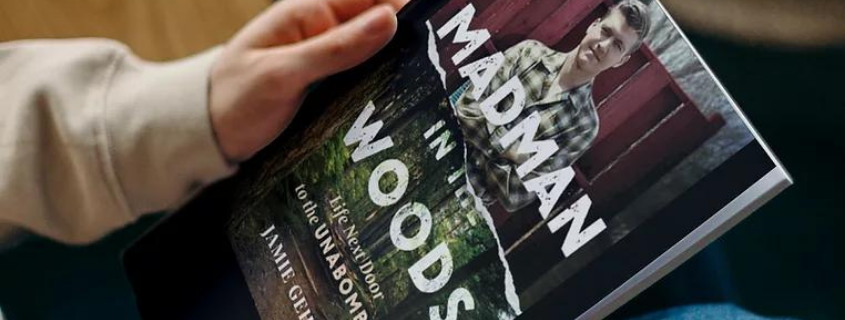
Editor’s Note: On the occasion of her debut memoir, Madman in the Woods: Life Next Door to the Unabomber, Marketing and Communications Coordinator Therese Gardner asked Lighthouse member Jamie Gehring a few questions about her process, how her book came together, and more.
Therese Gardner: Can you talk a bit about the inspiration for this book? When did you know that you wanted to write this story?
Jamie Gehring: I have always wanted to write this story and was reminded of the pull after my father passed away close to ten years ago. It was always a goal because of my dad’s involvement in the initial investigation of the Unabomber and our proximity to him as neighbors while I was growing up. Actually, during the production of the Netflix documentary in 2018 while conducting pre-interviews, I started creating the development and characters for a book of short stories.
After being rejected by two different agencies with the idea for a book of short stories, I made the decision to shift it into a memoir. Some of the short stories I had included had already been told due to the investigation and other interviews, so the shift to memoir became a way of telling the story of how living next to a murderer all those years affected my personal journey of what was really happening in our shared backyard through childhood memories of Ted, my father's role in Kaczynski's arrest, and the harrowing reality of growing up next to a serial murderer.
TG: You mentioned that the book was originally devised as a collection of short stories. I imagine the process for that differed from writing a memoir. Can you talk a bit more about what that writing process looked like?
JG: The outline was incredibly productive for me. One of the most challenging was timeline and structure, and how all the pieces were going to fit together. After I developed the outline, I took large notecards and wrote a theme or a person in the book and their characteristics and events that took place and taped them all over the wall in my basement. I would reference them visually to see and feel how they worked together in the timeline which became a rewarding part of the experience. When I was writing a scene about a specific character, I would reference the notecards to inform the process and help narrate the direction a specific scene needed to go.
TG: What was the most challenging part of writing your memoir?
JG: I was not a writer. Or at least didn’t consider myself a writer. I had to teach myself how to write in-scene and how to braid my own personal experiences with Ted’s history and what made him. In addition to braiding in interviews from the FBI and other neighbors who had relationships with Ted and having to change the point of view without losing the reader in the narrative.
One of the most difficult parts in learning how to write this particular project was learning the industry and learning how to write a proposal upon receiving an incredible number of rejections. I wrote a marketing plan and queried for probably a year until receiving two offers. So, learning the process and being okay with being rejected. But, alas, it’s just part of it.
TG: What did you read, if anything, while drafting the manuscript?
JG: I devoured memoir, especially if it was braided because it was unique and kind of a challenge to pull off without losing your character in the narrative. I read The Fact of a Body by Alexandria Marzano-Lesnevich as a comp in my proposal and to understand the flow. I also read The Stranger Beside Me by Ann Rule because I was trying to connect with others who had experienced knowing a killer. It was inspiring for my own work aside from just the true crime element. I also read The Babysitter by Jennifer Jordan and Liza Rodman, If You Tell by Gregg Olsen, and Greenlights by Matthew McConaughey. I wanted to focus on books that incorporated true crime elements and others that had a braided aspect to them. I also read The Overstory by Richard Powers and many things with nature writing in it.
TG: What are you working on these days?
JG: I’m working on a series of essays that will complement the novel. That being said, I will never look at a book the same again. Learning to market a book when you’re a little more introverted—there’s so much that goes into each and every book. I’m working on the marketing piece and how to connect with the readers that will connect with the book and carry it out into the world.
I’m not working on a new book right now, but have been spending ten minutes a day devoting myself to writing. I don’t want to lose touch with the creative process and the power of writing and want to continue to stretch that muscle without losing the spark and passion that it brings.
I’m planning a few events with the Denver Library and I am so excited. I know I have another project in mind, so once I get through this I will start putting more words on the page.
________________________________________________________________________________________________________________________
Meet author Jamie Gehring as she shares her fascinating new memoir Madman in the Woods: Life Next Door to the Unabomber at Sam Gary Branch Library on Friday, April 22 at 4:00 PM MDT.
If by chance this event sells out before you're able to register, you can also meet Gehring at Barnes & Noble on Sunday, April 24 at 1:00 PM MDT.
You can pre-order her memoir here.

